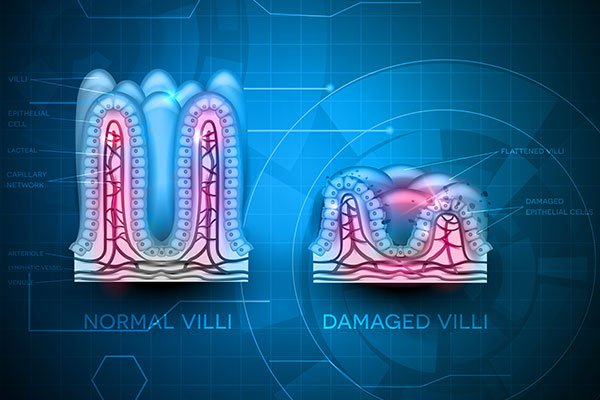
Celiac disease is a genetically inherited disorder that affects both children and adults. When individuals with Celiac disease consume foods containing gluten – a protein found in wheat, rye, barley, and other lesser-known grains – it leads to damage to the villi in the small intestine. Despite its prevalence, Celiac disease is often underestimated, affecting 1 in 133 average healthy individuals, making it more common than several well-known diseases such as Alzheimer's Disease, Cystic Fibrosis, Hemophilia, Parkinson's disease, Autism, Ulcerative colitis, Crohn's disease, Lupus, and Multiple sclerosis. The prevalence rises to 1 in 56 for those experiencing related symptoms.
For individuals with Celiac disease, achieving health requires the elimination of gluten from their diet. Gluten is present in numerous foods, sauces, and condiments. What sets Celiac disease apart is its manageable nature through dietary measures alone. Unlike many other conditions, medication is not necessary; instead, strict adherence to a gluten-free diet becomes imperative. This raises the question: which other diseases can be effectively managed through diet alone?
What are the symptoms Of Celiac Disease?
Celiac disease manifests with a multitude of symptoms, but it is crucial to emphasize that a significant portion of the population may exhibit no symptoms at all. Around 41% of adults with Celiac disease are asymptomatic, meaning they display no symptoms. Furthermore, an even greater percentage of children may not experience any symptoms. Approximately 60% of children with Celiac disease either exhibit no symptoms or are considered asymptomatic.
There are 256 symptoms and related conditions that may indicate a patient has celiac disease.* As previously mentioned, the majority of individuals with Celiac disease exhibit no symptoms and are thus considered to have silent celiac disease. Symptoms for Celiac disease encompass but are not limited to, the following: diarrhea, constipation, anemia, fatigue, mild or vague abdominal symptoms such as bloating, pain, and loose stools; irritable bowel syndrome, stomach pain, weight loss, malnutrition, edema, Aphthous Ulceration (mouth sores), joint pain, bone pain, headaches, infertility, repeated miscarriages, osteoporosis, diabetes, thyroid problems, Down syndrome, skin rashes, dermatitis, arthritis, psychiatric disorders, short stature, Dermatitis Herpetiformis (a skin condition), chronic hepatitis with hypertransaminasemia, permanent enamel hypoplasia, epilepsy with occipital calcifications, primary biliary cirrhosis, primary ataxia, stress, food allergy, gallstones, and nervous conditions.
Given that many individuals with celiac disease may not exhibit any symptoms, it becomes crucial for first-degree relatives of those with celiac disease, as well as individuals experiencing related symptoms or conditions, to undergo testing. Since not all physicians may be well-versed in celiac testing, it is advisable to review or print out our information on testing for reference.
The Benefits of Early Diagnosis of Celiac Disease
The advantages of early detection of Celiac Disease are substantial. A delayed diagnosis significantly heightens the risk of developing autoimmune disorders, neurological problems, osteoporosis, and even cancer. To underscore the stark increase in risk, consider that the general risk of autoimmune disease in the US population is 3.5%. For children aged 4-12, the likelihood of developing an autoimmune condition is 16.7%, approximately four times that of the general population. Meanwhile, individuals over the age of 20 face a 34% risk of developing an autoimmune condition, roughly nine times that of the general population.**
Currently in the US, it takes, on average, more than 10 years for individuals with symptoms to receive a diagnosis of Celiac disease. Such prolonged delays in diagnosis expose individuals to significant risks of developing other serious health conditions.
*Source: Celiac Disease: Myths and Facts. Stefano Guandalini, M.D., Michelle Melin-Rogovin, MPP, University of Chicago Celiac Disease Program.
**Source: Duration of exposure to gluten and risk for autoimmune disorders in patients with celiac disease. SIGEP Study Group for Autoimmune Disorders in Celiac Disease. Ventura A, et.al. Gastroenterology 1999 Aug; 117(2):297-303.
